#tailless amphibian
Explore tagged Tumblr posts
Text
One of my fave headcanons for Amphibia's harmful social structure is the idea of possessing a tail being overly pushed for a superiority complex in the caste system. And newts, aside from axolotls, as the only ones to evolve to have one, resultantly categorise it as the "superior evolution" to put frogs and toads beneath them
There's literally an entire concept of Newtopia having a fake-tails replacement shop that further feed the idea of a newt losing their tail, being stereotyped as disreputing and mocked upon in the society they set up (to adresss the fact pollywogs of frogs and toads do lose their tails in reaching adulthood), leaving them fetching for a fake one to cover up their "shame" through the period it takes to fully regenerate
And the stake of which, "tailless" could even be a used potential slur against targeted amphibians
#I also had this scandalous idea of having a bigger tail being more socially appreciated. I mean have you seen King Andrias' thicc back alley#newts get sensitive and conscious about tail size#looking at tritonio the newtopia outcast™ that has a small tail#heck there could be shady “make your tail bigger with this secret trick. because bigger is better!!” products even#amphibia#text post#newtopia
85 notes
·
View notes
Text
so today i might re-write sire'd bio to include the new lore! I really like the idea that not only elves had gxd like figures and I think the ocean is its own entity. Much like the titan is literally the earth and stone and the dwarves have a deep connection to it. Qunari have deep connection to the water. Theres little to no basis for this in canon but the devs literally hate qunari lmao. My city now.
I would also like to touch on the dragon blood, whether kossith were a seperate faction of elves or a completely different race, I think the dragons blood is a taint. It's not supposed to be there. Kieran says it, Corphy says it. Their biology has changed drastically, in my canon they were..elf like but i won't say elves (like if a human or dwarf saw them they'd be like OH weird elves but elves n qunari would cock their brow.) they used to have longer ears, tailless and hornless but had long fin like tenrdils but humanoid like current day qunari [again think like atlantis in its many iterrations, or somewhat like zorra in LOZ but a bit more reconizable to us humans] and bc of the ocean thing im going for, im gonna say they had amphibian like traits such as webbing, and their builds have relatively stayed the same. Tall, muscular but still able to have variying body types. I believe the dragon blood twisted their biology into being the way it is and it was a painful evolution and many ppl died ( also its canon that the dragon blood drinking is after the qun is formed, kossith had no reason to drink blood as they seemed to be peaceful, advanced but culturally stagnant which is why Koslun gained his support, it was quite literally a cultural reset and something fresh and included everyone as important.)
I think it might be important to mention this in sire's little bio at least a bit lol..
7 notes
·
View notes
Text

A simple one from the famous cryptids list with the Loveland Frogman out for a stroll. First described by Ohio residents as giant bipedal frogs, one was caught and turned out to be a tailless iguana. I added iguana spikes and blended some features between reptile and amphibian.
#animals#my art#sketch#drawlloween#inktober#drawlloween 2023#ink#ink drawing#cryptids#frogman#frogs#loveland frogman#october art challenge
78 notes
·
View notes
Text
Glass frogs (family Centrolenidae) are very small tailless amphibians - from 2 to 8 cm, which are mainly nocturnal. These unusual creatures live in southern Mexico, Central America and South America. 💚🍀

30 notes
·
View notes
Text

















World Frog Day
World Frog Day is an annual celebration celebrated on March 20. Unlike other animals, not all of us love frogs for their looks, appearance, and most importantly, their croak. Most often they are tiny creatures, small in body, and will make us scrunch up our faces. Frogs are amphibians that can be found both on land and in water. They are considered to be predators and play an important role in preserving the environment throughout their lives. In recent years, however, frogs have been critically endangered for several reasons. World Frog Day is an awareness day celebrated to save these living beings and provide them with a safer environment to survive.
History of World Frog Day
World Frog Day has been celebrated since 2014. There is no precise mention of the person or organization that started this awareness day; it was created to save the different frog species from extinction. Frogs are tailless amphibians with origins dating back nearly 256 million years. They were valued as food by the people and also have many cultural roles including literature, symbolism, and religion. Approximately 6,000 known frog species have been found, of which 4,800 recorded frog species have been found around the world except for Antarctica. But around 170 species of frogs have become extinct in the past decade. The reason for their population decline is different, as they are disappearing due to both human activity and fungal infections.
Frog populations have declined significantly since the 1950s and around a third of the world’s species are critically endangered, while more than 120 species are believed to have been extinct since the 1980s. The extinction of certain frogs has been traced back to emerging fungal diseases, habitat destruction and alteration, pollution, climate change, pesticide use, and more. All of this led to an increase in malformations in frogs in particular.
Many conservation biologists around the world are actively working to find and understand the causes of these problems and ways to solve them. Frogs are tailless amphibians of the order. Anura. They are widespread from the tropics to the subarctic regions, but the highest concentration of biodiversity is found in tropical rainforests. The oldest fossil of the “Protofrog” appeared in the early Triassic of Madagascar. However, the dating of the molecular clock suggests that the origin of the frog could stretch further back into the Permian, approximately 265 million years ago.
World Frog Day timeline
265 Million Years Ago Frogs are Discovered
The first species of frogs are discovered.
2014 The First Year of the Celebrations
World Frog Day is first observed.
2016 Frog Numbers have Boomed
Local volunteers help to increase conservation work in Scotland.
2020 The Work in Scotland
A becoming population of common frogs is discovered.
World Frog Day FAQs
Why is World Frog Day celebrated?
It is celebrated to mark the existence of frogs, to create awareness of the different species, and to advocate for their protection.
What is the biggest frog in the world?
The Goliath frog is the largest in the world.
What country has the most frogs?
Brazil has the most frogs with a total Amphibian species count of 1,022.
World Frog Day Activities
Get to know more about frogs
Help raise awareness
Start practicing some new environmental-friendly habits
Get to know about the frogs, their habitats, types, and their ecological roles in detail. It’s sure to be interesting!
Help to raise awareness of the decline in the frog population and the importance of saving them in the community. Instead of killing them, ask them to protect this incredible creature.
Help create some environmental changes such as reducing pollution and pesticide usage to prevent them from being killed. What are you waiting for?
5 Facts About Frogs That Will Leave You Baffled
6,000 species of frogs across the world
Frogs can drink water through their skin
Jump 20 times their body length
Some of them are poisonous
They display vibrant colors
Frogs are among the most diverse animals on land, with more than 6,000 species distributed across various parts of the globe.
Frogs drink water through their skin by absorbing it and have a drinking patch located on their belly and the underside of their thighs via which they absorb water.
One trait that stands out among frogs is their ability to jump and can reach heights of 20 times their body length.
Poison dart frogs have highly toxic skin and one species known as the golden poison frog perfects the ability to kill 10 adult males.
Frogs are not just green or yellow — which are commonly seen during the monsoon months — but display a range of colors from vibrant red to dark blue.
Why We Love World Frog Day
It's aimed to raise awareness
It celebrates these diverse and valuable treasures of the ecosystem
It improves people's overall knowledge about frogs
The primary aim of this day is to raise awareness of the different species of frogs and to protect them further. See what you can do on this day to contribute.
Frogs play a central role in many ecosystems. They control the insect population, and they're a food source for many larger animals. Frogs can also secrete substances through their skin. Some secretions are beneficial and researchers have used some of them to create new antibiotics and painkillers.
Aside from the celebration of the tailless amphibians, it's a day also set aside to help educate the general populace on the different species of frogs that exist, their habitats, how they feed, what is causing their ecological decline, and how we can better protect and save these awesome creatures.
Source
#Frog Pond by Richard Clopton#Wey Frosch#Güdis Montag#Lozärner Fasnacht#Lucerne Carnival#St. Augustine#California toad#Golden poison frog#Green and black poison dart frog#wildlife#Bronx Zoo#Blue poison dart frog#Boston Common#Boston#Frogs at Tadpole Playground by David Phillips#original photography#sculpture#public art#cityscape#landmark#tourist attraction#animal#California#Yountville#vacation#travel#20 March#World Frog Day#WorldFrogDay#architecture
3 notes
·
View notes
Note

A frog for our scarfy boy. Look how happy he is that you like him!!!
(Srry anonimous doesnt allow for pics)




Patton: Uh, frog facts… okay! I’m taking a page out of Logan’s book today!
Logan: You’re the one with frog knowledge, bud.
Patton: Okay, so. *ahem* The term “frog” is actually rather diverse among species, but what we all have in common is our “status” as small, tailless amphibians. Which means yeah, like Janus, I’m cold blooded. Hey look, we’re really not that different!
Janus: Cheers.
Patton: But even with that, there are some species of frogs that can turn mostly frozen during winter to hibernate and come out completely fine- I can’t do that, but that’d be cool. Also, theoretically speaking, I guess I could live underwater for a few months and come back and be fine.
Roman: We would miss you!
Patton: I can keep going, but admin is bored of researching frogs.
Nico: I feel like I’ve learned a lot. :)
Thomas: It’s weird having Patton teach.
Logan: THOMAS I AM NOT THE ONE WITH THE INFORMATION ABOUT FROGS
11 notes
·
View notes
Text
Warrior Cats Prefixes- T
I had a WC Name Generator on Perchance that I made but I don't seem to have access anymore, so I'm remaking it here as just a simple list. The definitions used are the ones that Clan cats have for those things, and thus are the origins of the names. Definitions used are whatever I found when I googled it.
Tadpole-: "[noun] the tailed aquatic larva of an amphibian (frog, toad, newt, or salamander), breathing through gills and lacking legs until the later stages of its development"
Tall-: "[adj] of great or more than average height, especially (with reference to an object) relative to width"
Talon-: "[noun] a claw, especially one belonging to a bird of prey"
Tangle-: "[verb] twist together into a confused mass; [noun] a confused mass of something twisted together"
Tangled-: "[adj] twisted together untidily, aka matted; [adj] complicated and confused, aka chaotic"
Tansy-: "[noun] a plant of the daisy family with yellow flat-topped flower heads and aromatic leaves"
Tassel-: "[noun] the tufted head of some plants, especially a flower head with prominent stamens at the top of a cornstalk"
Tattered-: "[adj] old and torn or in poor condition"
Tawny-: "[adj] of an orange-brown or yellowish-brown color; [noun] an orange-brown or yellowish-brown color"
Teasel-: "[noun] a tall prickly Eurasian plant with spiny purple flower heads"
Tempest-: "[noun] a violent windy storm"
Tern-: "[noun] a seabird related to the gulls, typically smaller and more slender, with long pointed wings and a forked tail"
Thaw-: "[verb] (of ice, snow, or another frozen substance, such as food) become liquid or soft as a result of warming; [noun] a period of warmer weather that thaws ice and snow"
Thawing-: "[noun] the process of ice, snow, or another frozen substance becoming liquid or soft as a result of warming up"
Thick-: "[adj] with opposite sides or surfaces that are a great or relatively great distance apart; [adj] made up of a large number of things close together"
Thicket-: "[noun] a dense group of bushes or trees"
Thistle-: "[noun] a widely distributed herbaceous plant of the daisy family, which typically has a prickly stem and leaves and rounded heads of purple flowers"
Thorn-: "[noun] a stiff, sharp-pointed, straight or curved woody projection on the stem or other part of a plant; [noun] a thorny bush, shrub, or tree, especially a hawthorn"
Thrasher-: "[noun] any of various American oscine birds (family Mimidae, especially genus Toxostoma) related to the mockingbird that resemble thrushes but have a usually long curved bill and long tail"
Thrift-: "[noun] a European plant which forms low-growing tufts of slender leaves with rounded pink flower heads, growing chiefly on sea cliffs and mountains"
Thrush-: "[noun] a small or medium-sized songbird, typically having a brown back, spotted breast, and loud song"
Thunder-: "[noun] a loud rumbling or crashing noise heard after a lightning flash due to the expansion of rapidly heated air"
Thyme-: "[noun] a low-growing aromatic plant of the mint family"
Tick-: "[noun] any of a superfamily of bloodsucking acarid arachnids that are larger than the related mites, attach themselves to warm-blooded vertebrates to feed, and include important vectors of infectious diseases"
Ticked-: "[adj] having or made of hair banded with two or more colors"
Tidal-: "[adj] relating to or affected by tides"
Tide-: "[noun] the alternate rising and falling of the sea, usually twice in each lunar day at a particular place, due to the attraction of the moon and sun"
Tiger-: "[noun] a very large solitary cat with a yellow-brown coat striped with black; [noun] used to refer to someone fierce, determined, or ambitious"
Timber-: "[noun] wood prepared for use in building and carpentry"
Tiny-: "[adj] very small"
Tree-: "[noun] a woody perennial plant, typically having a single stem or trunk growing to a considerable height and bearing lateral branches at some distance from the ground"
Toad-: "[noun] a tailless amphibian with a short stout body and short legs, typically having dry warty skin that can exude poison"
Todd-: "[noun] a male fox"
Tornado-: "[noun] a mobile, destructive vortex of violently rotating winds having the appearance of a funnel-shaped cloud and advancing beneath a large storm system"
Torrent-: "[noun] a strong and fast-moving stream of water"
Tortoise-: "[noun] a turtle, typically a herbivorous one that lives on land"
Tranquil-: "[adj] free from disturbance. Calm"
Trillium-: "[noun] a plant with a solitary three-petaled flower above a whorl of three leaves"
Trout-: "[noun] a chiefly freshwater fish of the salmon family"
Truffle-: "[noun] strong-smelling underground fungus that resembles an irregular, rough-skinned potato, growing chiefly in broadleaved woodland on calcareous soils"
Tufted-: "[adj] having or growing in a tuft or tufts"
Tulip-: "[noun] a bulbous spring-flowering plant of the lily family, with boldly colored cup-shaped flowers"
Tumble-: "[verb] (typically of a cat) fall suddenly, clumsily, or headlong"
Tunnel-: "[noun] an artificial underground passage, especially one built through a hill or under a building, road, or river; [verb] dig or force a passage underground or through something"
Turkey-: "[noun] a large mainly domesticated game bird native to North America, having a bald head and (in the male) red wattles"
Turtle-: "[noun] a slow-moving reptile, enclosed in a scaly or leathery domed shell into which it can retract its head and thick legs"
Twig-: "[noun] a slender woody shoot growing from a branch or stem of a tree or shrub"
Twilight-: "[noun] the soft glowing light from the sky when the sun is below the horizon"
Twine-: "[noun] strong thread or string consisting of two or more strands of plants twisted together; [verb] cause to wind or spiral round something"
Twirl-: "[verb] spin quickly and lightly around, especially repeatedly"
Twirling-: "[verb] spin quickly and lightly around, especially repeatedly"
Twist-: "[verb] form into a bent, curling, or distorted shape; [noun] a thing with a spiral shape"
Twisting-: "[verb] form into a bent, curling, or distorted shape; [verb] cause to rotate or turn around something that remains stationary"
4 notes
·
View notes
Note
have you ever heard about frogs? i just found out about them and this shit is WILD frog (noun): a tailless amphibian with a short squat body, moist smooth skin, and very long hind legs for leaping. (Oxford Languages)
here, have some pictures:



i love them.
Oh wow thats incredible I wonder if there's a TV show about these guys out there somewhere
23 notes
·
View notes
Note
🐸 F R O G 🐸
frog, any of various tailless amphibians belonging to the order Anura. Used strictly, the term may be limited to any member of the family Ranidae (true frogs), but more broadly the name frog is often used to distinguish the smooth-skinned, leaping anurans from squat, warty, hopping ones, which are called toads.
I prefer moths though...

7 notes
·
View notes
Text
Frogs Vs Toads
Frogs and toads are both amphibians. An amphibian is a type of vertebrate animal that is characterized by its ability to live both in water and on land during different stages of its life.
Both frogs and toads undergo metamorphosis (a change) as it enables them to live in both aquatic and terrestrial environments.
Both frogs and toads are in the order called Anura.




1. Egg: Amphibians lay eggs in water. The eggs are usually surrounded by a jelly like substance that gives it protection. The toad eggs are laid in long strings while the frog eggs are layed in clusters.
2. Larva (Tadpole): After hatching, the larval stage, known as a tadpole, is fully aquatic.
Tadpoles have gills for breathing, a tail for swimming, and no limbs yet.
3. Metamorphosis: During this stage, tadpoles undergo significant changes:
• lungs develop that replace gills for breathing in air.
• Formation of limbs (back legs appear then followed by front legs).
• it reabsorbs its tail and becomes tailless.
4. Adult: The fully transformed adult frog/ toad is adapted for a terrestrial life, however, most frogs still remain close to water.
You might be wondering, "Which one lives longer?"
The answer is the toad. Did you know that the common toad (or the European toad) can live up to 12 years in the wild and 40 years in captivity? A frog in the wild can live up to 4-7 years.
Every spring, frogs and toads go back to their pond where they spawned to reproduce their own in the same place they were born. Imagine going back to your childhood home just to make some babies and leave them there.
Some species of frogs and toads have the ability to freeze solid during winter and survive. It is known as freeze tolerance or properly known as cryobiology. This amazing ability allows them to survive extremely cold temperatures by producing high concentrations of glucose in their organs and tissues, which acts as a natural antifreeze. As ice forms around them, their cells dehydrate, preventing damage from ice crystals and allowing them to thaw out and resume their lives when temperatures rise.
5 notes
·
View notes
Note
Silly Game Time: Who are some of your favorite reptile characters? And what do you like about them?
They could be fully a real reptile (snakes, lizards, crocodilians--heck I'll even let you include amphibians like frogs, toads, newts, and salamanders if you want), partially reptile (like naga a partially humans and dragons are partually anything else), humanoid from fantasy or sci-fi (kobolds or silurians, etc.), or something else entirely. All that matters is that they're reptilain or reptoid.
Not so much reptile characters but the little lizards scuttling all over my house are so cute ❤️
My favorite of them all is the one that chewed a hole into my oatmeal pack and lived there for weeks before I poured it into my breakfast bowl. And it was tailless. 🦎
1 note
·
View note
Text
frog
noun
a small, tailless, jumping amphibian of almost limitless power
1 note
·
View note
Text
0 notes
Text
Official definition of a frog
"A tailless amphibian with a short, squat body, moist, smooth skin and very long hind legs for leaping. Frogs are found in most families of the order Anura, but the 'true frogs' are confined to the large family Ranidae.
Everyone who reblogs this will find a pic of a frog in their messages
You will be answered faster if you say something in your reblog
4K notes
·
View notes
Text

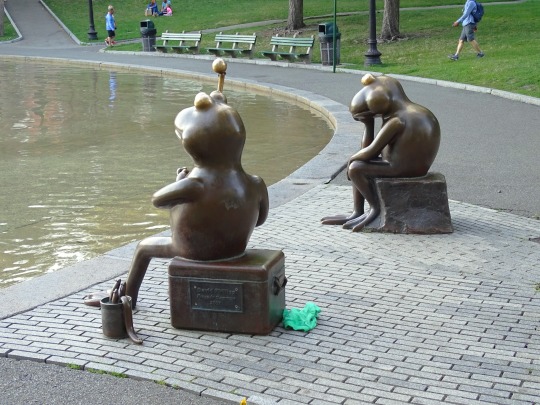

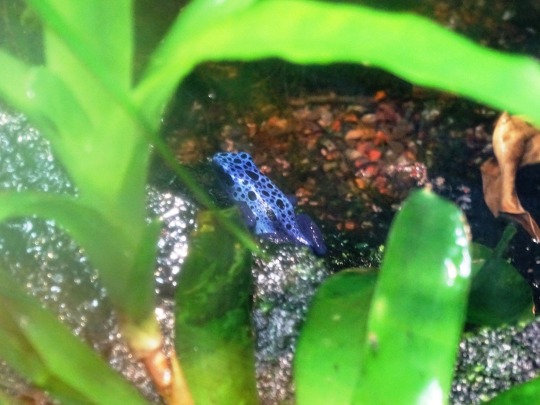
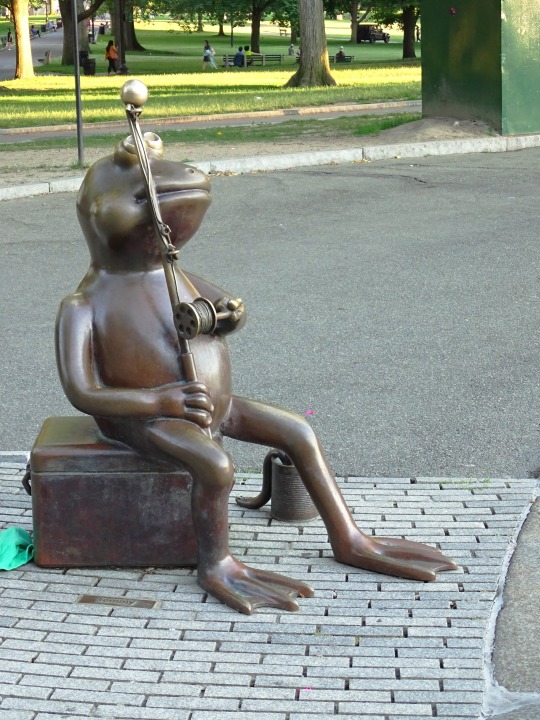
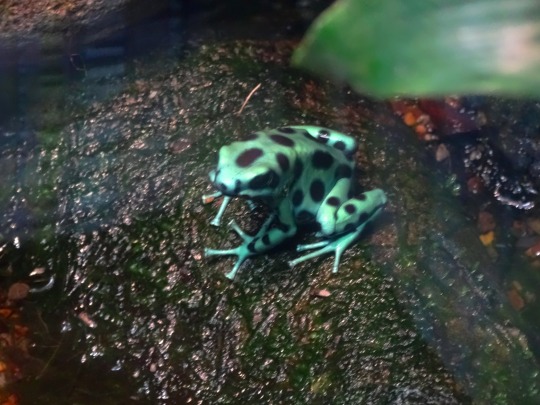
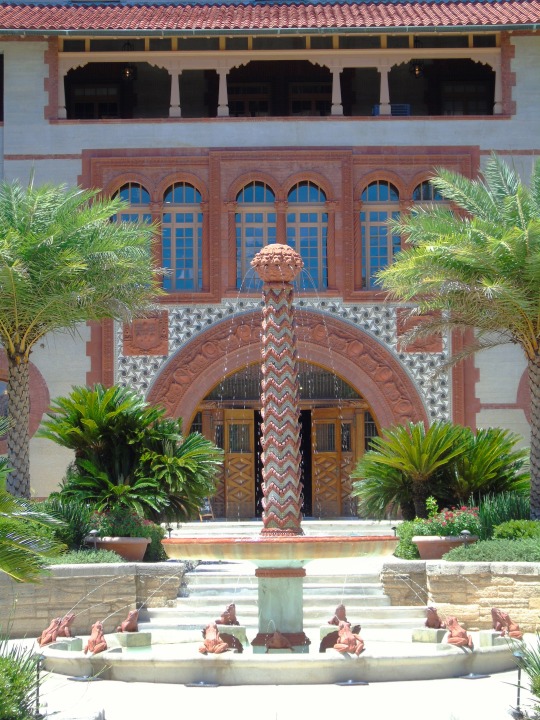

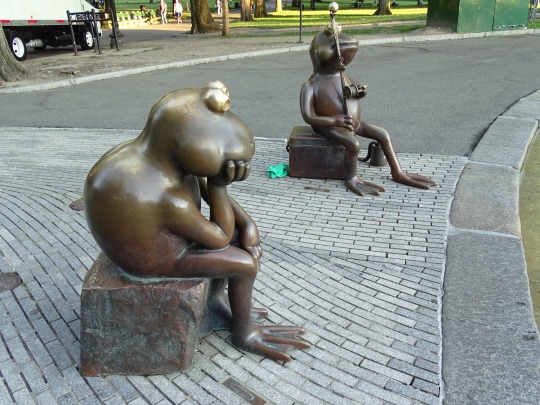
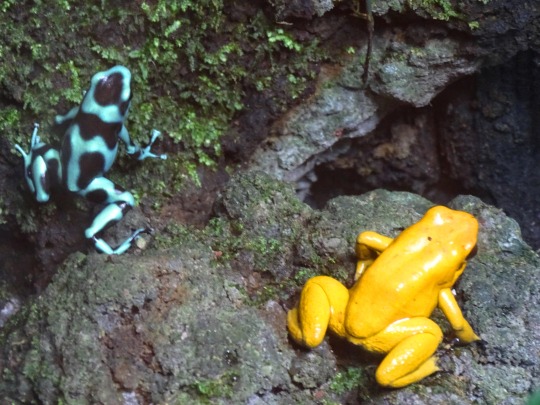
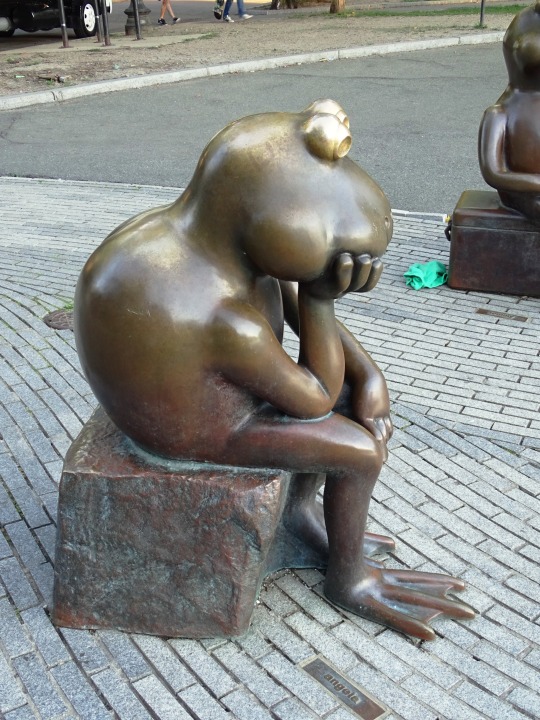
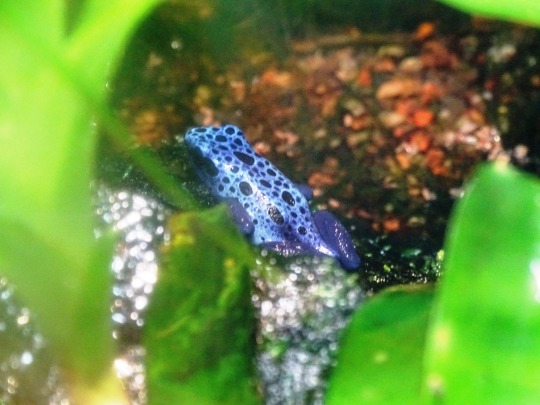
World Frog Day
World Frog Day is an annual celebration celebrated on March 20. Unlike other animals, not all of us love frogs for their looks, appearance, and most importantly, their croak. Most often they are tiny creatures, small in body, and will make us scrunch up our faces. Frogs are amphibians that can be found both on land and in water. They are considered to be predators and play an important role in preserving the environment throughout their lives. In recent years, however, frogs have been critically endangered for several reasons. World Frog Day is an awareness day celebrated to save these living beings and provide them with a safer environment to survive.
History of World Frog Day
World Frog Day has been celebrated since 2014. There is no precise mention of the person or organization that started this awareness day; it was created to save the different frog species from extinction. Frogs are tailless amphibians with origins dating back nearly 256 million years. They were valued as food by the people and also have many cultural roles including literature, symbolism, and religion. Approximately 6,000 known frog species have been found, of which 4,800 recorded frog species have been found around the world except for Antarctica. But around 170 species of frogs have become extinct in the past decade. The reason for their population decline is different, as they are disappearing due to both human activity and fungal infections.
Frog populations have declined significantly since the 1950s and around a third of the world’s species are critically endangered, while more than 120 species are believed to have been extinct since the 1980s. The extinction of certain frogs has been traced back to emerging fungal diseases, habitat destruction and alteration, pollution, climate change, pesticide use, and more. All of this led to an increase in malformations in frogs in particular.
Many conservation biologists around the world are actively working to find and understand the causes of these problems and ways to solve them. Frogs are tailless amphibians of the order. Anura. They are widespread from the tropics to the subarctic regions, but the highest concentration of biodiversity is found in tropical rainforests. The oldest fossil of the “Protofrog” appeared in the early Triassic of Madagascar. However, the dating of the molecular clock suggests that the origin of the frog could stretch further back into the Permian, approximately 265 million years ago.
World Frog Day timeline
265 Million Years Ago Frogs are Discovered
The first species of frogs are discovered.
2014 The First Year of the Celebrations
World Frog Day is first observed.
2016 Frog Numbers have Boomed
Local volunteers help to increase conservation work in Scotland.
2020 The Work in Scotland
A becoming population of common frogs is discovered.
World Frog Day FAQs
Why is World Frog Day celebrated?
It is celebrated to mark the existence of frogs, to create awareness of the different species, and to advocate for their protection.
What is the biggest frog in the world?
The Goliath frog is the largest in the world.
What country has the most frogs?
Brazil has the most frogs with a total Amphibian species count of 1,022.
World Frog Day Activities
Get to know more about frogs
Help raise awareness
Start practicing some new environmental-friendly habits
Get to know about the frogs, their habitats, types, and their ecological roles in detail. It’s sure to be interesting!
Help to raise awareness of the decline in the frog population and the importance of saving them in the community. Instead of killing them, ask them to protect this incredible creature.
Help create some environmental changes such as reducing pollution and pesticide usage to prevent them from being killed. What are you waiting for?
5 Facts About Frogs That Will Leave You Baffled
6,000 species of frogs across the world
Frogs can drink water through their skin
Jump 20 times their body length
Some of them are poisonous
They display vibrant colors
Frogs are among the most diverse animals on land, with more than 6,000 species distributed across various parts of the globe.
Frogs drink water through their skin by absorbing it and have a drinking patch located on their belly and the underside of their thighs via which they absorb water.
One trait that stands out among frogs is their ability to jump and can reach heights of 20 times their body length.
Poison dart frogs have highly toxic skin and one species known as the golden poison frog perfects the ability to kill 10 adult males.
Frogs are not just green or yellow — which are commonly seen during the monsoon months — but display a range of colors from vibrant red to dark blue.
Why We Love World Frog Day
It's aimed to raise awareness
It celebrates these diverse and valuable treasures of the ecosystem
It improves people's overall knowledge about frogs
The primary aim of this day is to raise awareness of the different species of frogs and to protect them further. See what you can do on this day to contribute.
Frogs play a central role in many ecosystems. They control the insect population, and they're a food source for many larger animals. Frogs can also secrete substances through their skin. Some secretions are beneficial and researchers have used some of them to create new antibiotics and painkillers.
Aside from the celebration of the tailless amphibians, it's a day also set aside to help educate the general populace on the different species of frogs that exist, their habitats, how they feed, what is causing their ecological decline, and how we can better protect and save these awesome creatures.
Source
#St. Augustine#California toad#Golden poison frog#Green and black poison dart frog#wildlife#Bronx Zoo#amphibian#Blue poison dart frog#Boston Common#Boston#Frogs at Tadpole Playground by David Phillips#summer 2018#summer 2019#2022#original photography#sculpture#public art#cityscape#landmark#tourist attraction#animal#California#Yountville#vacation#travel#20 March#World Frog Day#WorldFrogDay#architecture#USA
2 notes
·
View notes
Photo

Common Spadefoot Toad (Pelobates fuscus) is the only tailless amphibian with vertical pupils on the territory of the Russian Federation.
When alarmed, it can exude a noxious secretion which smells like garlic, hence the common name "garlic toad".
#furry#furry art#common spadefoot toad#pelobates fuscus#tailless amphibian#vertical pupils#garlic toad#toad#frog
11 notes
·
View notes